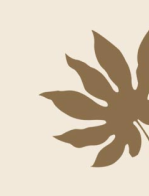Hemp vs linen, which is the better textile?
In this article, we will be going over the differences of hemp vs. linen. Both types of fibers come from plants, but they are from different species and their byproducts have slightly different benefits. Hemp and linen both are extremely versatile and functional. They are used to make clothing such as dresses, pants or jackets and are both considered breathable materials which make them stand out as summer clothes. Both fabrics are also used as home textiles like curtains, tablecloths, napkins or bedding.
Are hemp and linen the same?
Hemp and linen are not the same. Although they are both natural plant fibers they come from different types of plants. Hemp is manufactured out of the Cannabis sativa plant, which has fibrous long stalks that are much more resistant to tearing and stretching. Linen comes from the fibers of the flax plant which has a smoother texture with a unique softness. Opposed to hemp, which does not absorb as much water, linen can hold up lots of moisture. Because these are plant-based materials both textiles are fully biodegradable.
Hemp vs linen sustainability
Looking at hemp vs linen in terms of sustainability you will find that both materials are highly environmentally friendly. They just have slightly different environmental impacts and benefits. Hemp has been gaining visibility as a sustainable crop because it grows quickly without pesticides or fertilizers. These are also great efficient crops as you can get more fiber per acre than with any other textile. It also improves soil quality and requires little water. Linen also needs less water and energy if you compare it to other similar products. It is also beneficial for the environment, requiring few chemicals and fertilizers to grow.
Water consumption
As mentioned before both hemp and linen have very low water consumption when it comes to cultivation. Linen requires slightly less water to grow than hemp, but hemp is considered a low-water crop and has a deeper root system which allows it to get water from the deeper layers of the soil. This in itself reduces the usage of water for the hemp plant. Compared to other textiles such as cotton, both hemp and linen are considered sustainable options.
Damage to cultivation soil
If you compare hemp vs linen in terms of damage to cultivation soil you will find very little difference. These are environmentally friendly products as they do not damage the soil. Hemp actually acts as a natural fertilizer for the soil. Once the hemp plant is harvested its leaves and stems are left behind and fertilize the ground. The deep root system also penetrates the deeper layers of the soil breaking it up and hemp to avoid compacted soil. The flax plant which is used to produce linen also helps to loosen the soil and is fully biodegradable.
How resistant is hemp to linen?
Hemp is usually considered to be stronger and more resistant material than linen, but keep in mind that each one has its own benefits. Hemp is known to have a unique strength that comes from the thick fibers present in the plant’s stems. It is also less prone to stretching, losing its shape or shrinking compared to other textiles derived from natural fibers. Linen is less strong than hemp, more prone to wear and tear, and wrinkling. When comparing hemp vs linen just know that they are both great sustainable fabrics, each one with its own unique characteristic and benefits. Both are great options if you are looking to reduce your carbon footprint while obtaining a great quality garment!

Experience the purest rolling sensation with Pure Hemp. Our rolling papers are crafted from 100% natural hemp, ensuring a smooth, clean burn with every use. Whether you’re a seasoned roller or just starting out, our eco-friendly papers deliver the perfect combination of durability and performance.








